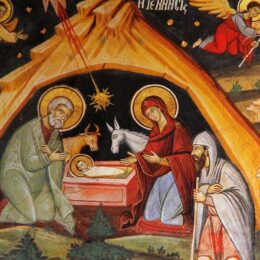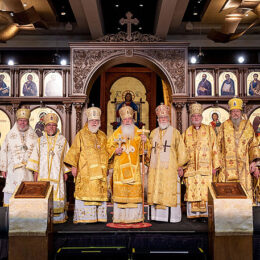 by Phil Manger –
by Phil Manger –
I should have known better than to expect anything like real history from The History Channel. With the notable exception of some of their reality series like Pawn Stars, American Restoration, and Ice Road Truckers — all three of which I admit (somewhat sheepishly) to watching and enjoying — their usual fare consists mostly of dramatizations of history filtered hrough the lens of modern (which is to say, liberal) sensibilities.
At first it looked like The Men Who Built America, History’s new series about the great American industrialists of the late 19th and early 20th centuries, might be an exception. In the first two episodes, Cornelius Vanderbilt, John D. Rockefeller, and Andrew Carnegie are treated somewhat sympathetically; they are even credited with providing real economic benefits to society. There are omissions and factual errors, to be sure, and there are the usual annoying anachronisms that plague a lot of History Channel dramatizations (like 20th-century European locomotives pulling trains that supposedly were running on 19th-century American railroad tracks), but on the whole, I thought the series was off to a promising start.
That is, until they got to Henry Clay Frick.
Frick is the bad boy of American capitalism, the man everyone loves to hate. According to CNBC, Frick was once voted “the most hated man in America.” I have been unable to find evidence that there was ever an election in which Frick was voted that title, but yes, he was (and is) one of the most hated men in America. He is also one of the most lied about men in America, and The History Channel not only repeats the lies, but invents some new ones.
Frick is hated for his handling of the Homestead Strike, the violent 1892 labor dispute at the Carnegie Steel Company’s plant in Homestead, Pennsylvania — probably the most mythologized episode in American labor history.
The Mythologizing by the History Channel
The mythologizing begins with the Johnstown Flood of May 31, 1889. The Johnstown Flood, you say? What does that have to do with the Homestead Strike — or with the theme of the series? Nothing, really, except that it provides an opportunity to set up Frick as the bad guy.
The Johnstown Flood was a result of the breach, following two days of heavy rains, of the South Fork Dam, an earthen dam built across a tributary of the Little Conemaugh River 14 miles upstream from Johnstown, Pennsylvania. The flood left 2,209 people dead and was the deadliest disaster in American history until its death toll was surpassed by the 1900 Galveston hurricane.
The dam was owned by the South Fork Fishing and Hunting Club, an exclusive retreat for western Pennsylvania’s wealthiest citizens. The club was founded ten years earlier as a money-making venture by Benjamin F. Ruff, who bought the dam, the lake behind it, and 140 surrounding acres and performed all the modifications to the dam himself — including those modifications that later were believed to have contributed to the dam’s failure.
Frick was a member of this club (as were Andrew Carnegie, Philander C. Knox, Andrew Mellon, and sixty-odd other business leaders), and he helped Ruff recruit other members. That — plus his contribution of thousands of dollars to flood relief following the disaster — is his only documented connection with the flood.
Yet, according to The History Channel, Frick bears almost sole responsibility for the disaster. The series inaccurately portrays him as the founder and leader of the club, who cut corners and neglected dam maintenance in order to save money. In one memorable scene, he is shown ordering the weakening of the dam solely in order to be able to drive his carriage across it.
Of course, Frick, as chairman and manager of the Carnegie Company, did play a major role in the Homestead Strike, and he was trying to cut wages. Those are facts that can’t be denied. However, the context of the wage negotiations, as well as the events of the strike/lockout, are completely misrepresented.
The Carnegie Company had a contract with the Amalgamated Iron and Steel Workers, an old-style craft union that represented only the most skilled workers — less than a quarter of the total workforce — at the Homestead plant. And, for that time and place, they had it pretty good, as even the AFL-CIO’s website admits. Not only were the Homestead mills equipped with state-of-the-art machinery, but the union enjoyed “exceptionally good wages and work rules” — the highest wages in the industry, in fact. And that was part of the problem.
The price of steel had been falling, with steel beams selling at a price 39 percent below their price when the existing contract had been ratified three years earlier, and rigid union work rules prevented the company from taking full advantage of the plant’s new cost-saving machinery. Consumer prices had been falling, too, so in real terms, the steelworkers actually were earning more than they had been earning three years earlier. Given the trend in steel prices, the contract Frick offered the union was rather generous.
There is no mention of these facts. Instead, we are told that Carnegie’s motive in directing Frick to cut costs at Homestead was jealousy: he couldn’t stand the fact that he wasn’t as rich as Rockefeller and wanted to increase the company’s already obscene profits so he could catch up.
However, this distortion is nothing compared to the way the violent confrontation between the striking steelworkers and the men from the Pinkerton Detective Agency is depicted. Here is what happened, according to The History Channel: after 2,000 mostly unarmed steelworkers barricade themselves inside the plant, the leader of the heavily armed Pinkerton men walks up to the barricade and tells the strikers to tear down the barricade or he will “mow every one of you down.” When they refuse, the Pinkertons open fire and “massacre” — the word the narrator actually uses — nine steelworkers.
The only truth in this is the number of steelworkers killed — and one of those deaths was by friendly fire.
Here is what really happened:
The skilled Amalgamated men were joined in the strike by the unskilled non-union workers from the Carnegie plant. The striking steelworkers were now more than 3,000 strong and were armed with rifles, shotguns, pistols, and even a couple of cannons. They had literally taken over the city of Homestead and were not letting anybody enter or stay in the city who was not supporting the strike.
In the months leading up to the June 30 contract expiration date, Frick had caused a fence, topped with barbed wire, to be erected around three sides of the Carnegie property. The north side, which fronted the Monongahela River, was left open. He wanted to be able to bring strikebreakers, and Pinkerton men to protect them, onto the plant grounds by way of the river. The last thing he wanted was for them to have to fight their way in.
At 2 a.m. on July 6, two barges loaded with 300 Pinkerton men, armed with Winchester repeating rifles, were towed upriver from Pittsburgh. The striking steelworkers got advance warning and, joined by their women, other townspeople, and armed steelworkers from nearby mills, tore down the fence and surged onto the Carnegie property. When the Pinkerton men tried to come ashore at 4 a.m., they found themselves facing an angry mob of more than 6,000.
There is some dispute about which side fired the first shot — although most accounts agree that shots were fired at the barges even before the Pinkerton men tried to disembark. It really doesn’t matter. The whole point of entering the property from the river under cover of darkness was to avoid a violent confrontation. The mob — and it was a mob at this point, the Amalgamated leaders having lost control of it — wanted a fight; Frick and the Pinkertons didn’t. It’s as simple as that.
There was a lot of shooting by both sides, and by the time the Pinkertons surrendered at 5 p.m. (after the mob had made several attempts to set their barges on fire), nine steelworkers — one by shrapnel from their own cannon — and seven Pinkertons lay dead, with many more on both sides wounded. Even then, it was not over for the now-disarmed Pinkerton men, who were clubbed and beaten by the mob as they were herded through town.
These facts are well-known to everyone who has studied the Homestead Strike — even pro-union sources acknowledge them. But they don’t support the Frick-as-evil-exploiting-capitalist narrative The History Channel is trying to advance, so they are simply ignored. In fact, so intent are the producers and writers on demonizing Frick that they even distort the attempt made on his life.
On July 23, Alexander Berkman, a communist-anarchist Russian immigrant who had no connection with the Amalgamated union, entered Frick’s office and shot him three times and stabbed him twice. Frick survived the assassination attempt — was back in his office within two weeks, in fact — and Berkman was sentenced to 22 years in prison (14 of which he actually served).
In The History Channel’s dramatization, Berkman shoots Frick only once, and then his gun jams. Frick looks a little annoyed, but not hurt, and then proceeds to pummel the hapless Berkman to a bloody pulp. The sympathies of any viewer who knows nothing about the assassination attempt other than what he sees in this dramatization would more likely be with the would-be assassin than with the intended victim.
To be sure, Frick was not exactly a lovable figure. He was a hard-headed businessman and a tough negotiator. But he was hardly the devil the History Channel makes him out to be. Frick miscalculated at Homestead, but it was an innocent miscalculation: he assumed that the steelworkers would respect the law and would respect private property. Those assumptions proved unfounded.
In my opinion, The History Channel’s treatment of Frick has ruined the entire series. If they are so wrong about Frick, what else are they wrong about? This is unfortunate. The story of the entrepreneurs who were so important in making America the world’s leading industrial nation needs to be told — especially in an age in which entrepreneurs are loathed and denigrated. For a much better telling, allow me to recommend — enthusiastically — Jonathan Hughes’ The Vital Few: The Entrepreneur and American Economic Progress.
HT: American Thinker



